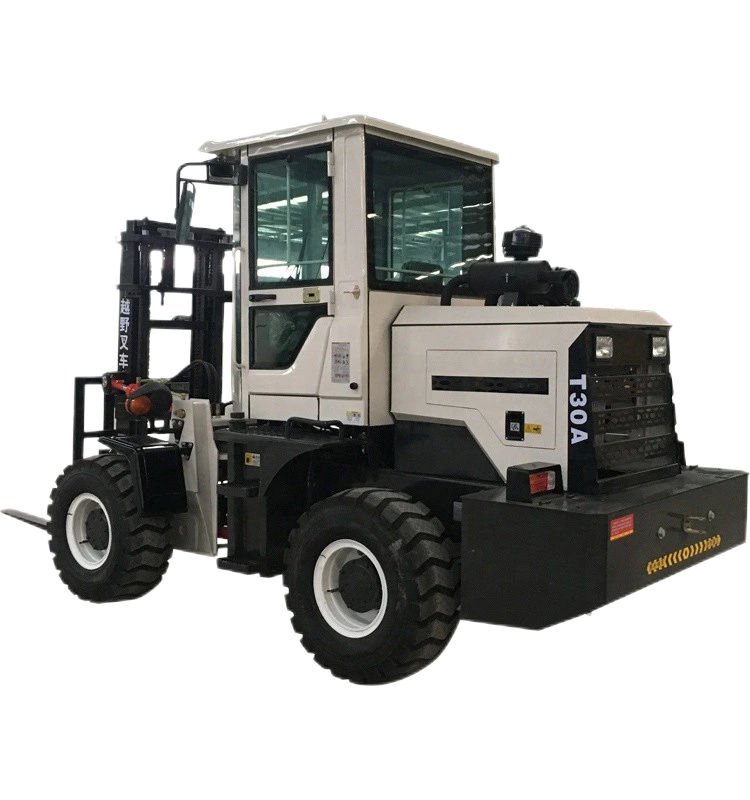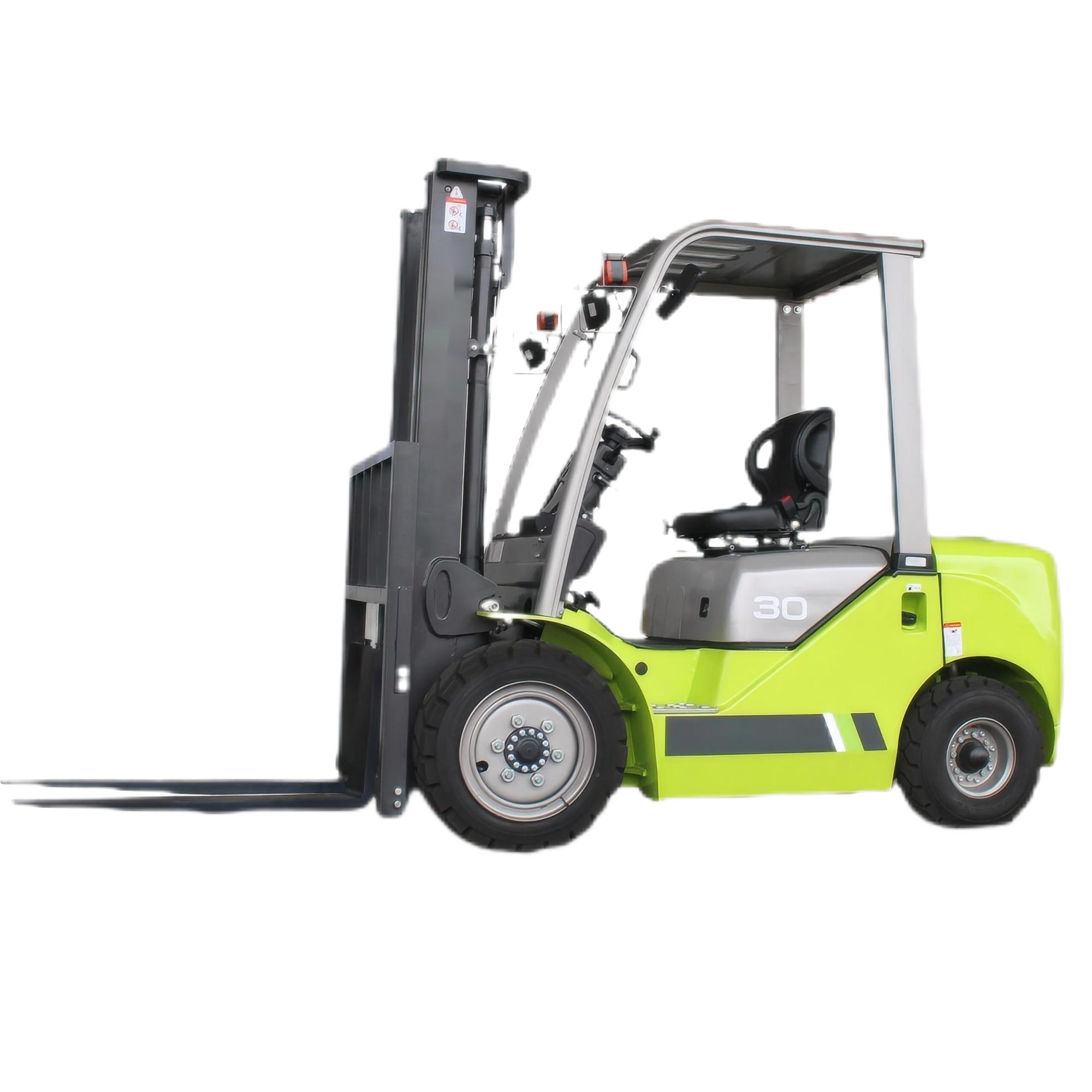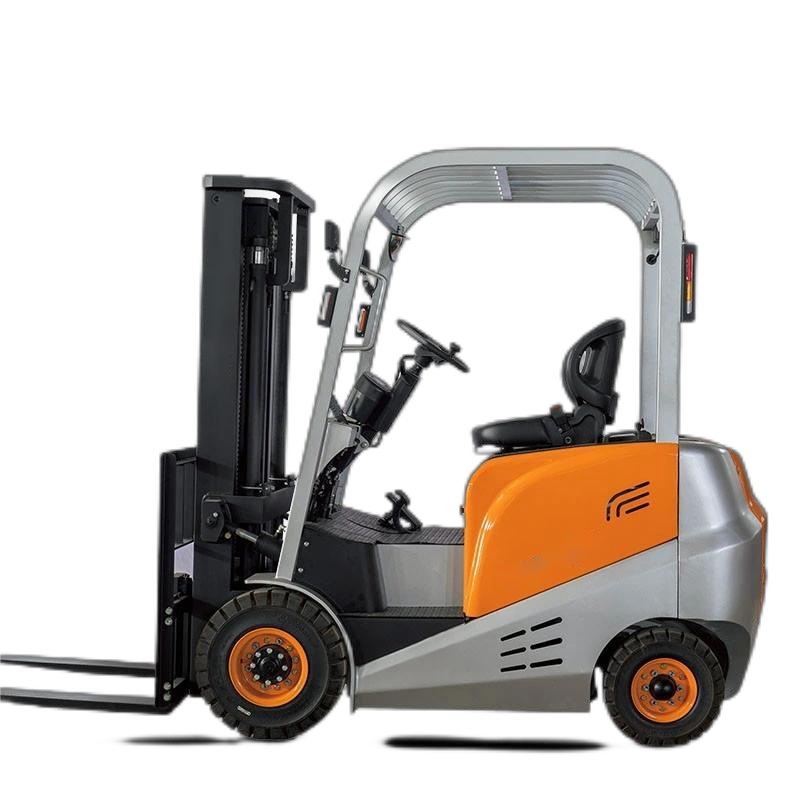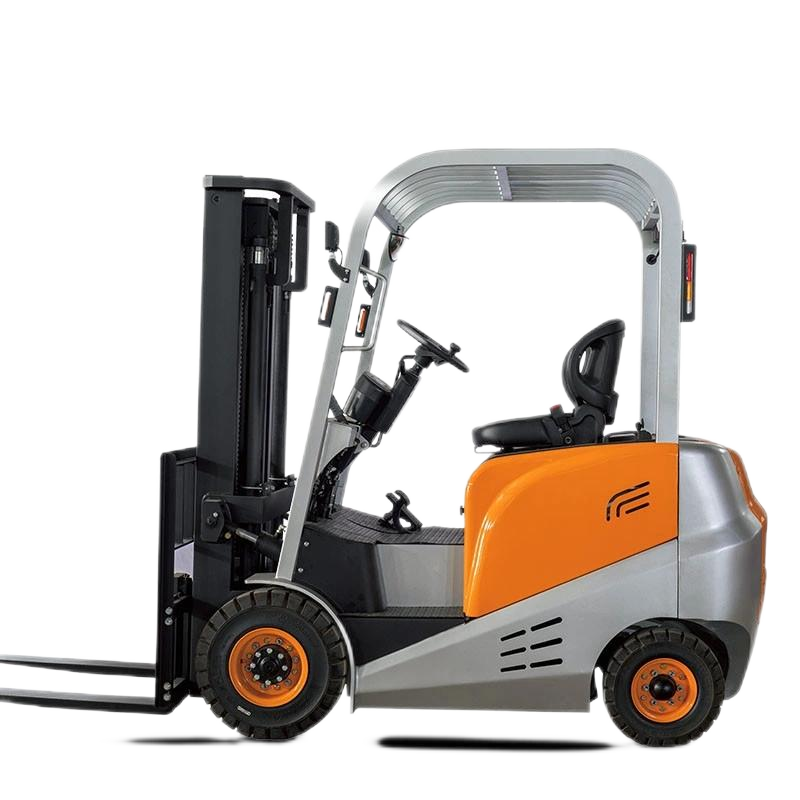There are differences between rough terrain forklifts and ordinary forklifts in multiple aspects. The following is a detailed comparison between them:

Structural Design
Chassis and Tires
- Rough Terrain Forklifts: Feature a high-chassis design with a minimum ground clearance of over 300mm and a departure angle of over 30°. Equipped with large-diameter wide-base off-road tires and no differential between axles, they have strong passability and can adapt to various complex terrains.
- Ordinary Forklifts: Have a lower chassis and smaller ground clearance. They typically use ordinary industrial tires and are suitable for driving on flat and solid roads.
Frame and Steering
- Rough Terrain Forklifts: Mostly adopt articulated frames with a swing angle generally reaching ±30°-40°. The steering system is simple, enabling a smaller turning radius, which makes it easier for the forks to align with materials. Small-tonnage rough terrain forklifts may also use integral frames with single-axle drive and a differential lock on the drive axle.
- Ordinary Forklifts: Generally have rigid frames, with front-wheel drive and rear-wheel steering. They have a relatively larger turning radius and are less maneuverable in narrow spaces compared to rough terrain forklifts.
Braking System
- Rough Terrain Forklifts: Except for small-tonnage forklifts that use expanding (expanding shoe brakes), most use disc brakes. Large-tonnage forklifts may also use wet brakes. Independent hand brakes are the most common for parking brakes, offering reliable braking performance to meet the braking needs on complex road conditions.
- Ordinary Forklifts: Usually adopt simpler braking systems, such as drum brakes or disc brakes, to meet the braking requirements on flat roads.
Power Performance
Engine Power
- Rough Terrain Forklifts: Equipped with high-power engines, they have strong power, providing sufficient traction and climbing ability to meet the driving and operating needs in complex terrains. The power factor is over 0.65, and they have a climbing capacity of 25°-30°.
- Ordinary Forklifts: Have relatively smaller engine power and are mainly used for loading, unloading, and handling goods on flat and solid roads. They generally meet the normal use in factories, warehouses, and other places.
Drive Mode
- Rough Terrain Forklifts: Adopt all-wheel drive systems, where all four wheels can provide power, enabling the vehicle to maintain good driving stability and passability in various complex terrains.
- Ordinary Forklifts: Generally use front-wheel drive and rear-wheel steering. This drive mode is suitable for driving on flat, dry hard roads and does not have off-road capabilities.
Operational Capability
Operational Movements
- Rough Terrain Forklifts: When loading and unloading goods, in addition to vertical movement, some rough terrain forklifts can also perform lateral shifting, which facilitates accurate loading and unloading of goods in complex terrains and improves work efficiency.
- Ordinary Forklifts: Their operational movements are mainly vertical lifting, achieving loading, unloading, and stacking of goods through the lifting of the gantry and the extension and retraction of the forks. The movements are relatively simple.
Lifting Force for Special Operations
- Rough Terrain Forklifts: Due to their strong power and structural design, they can provide greater prying force and can be used in special operation scenarios requiring prying heavy objects, such as handling, loading/unloading, and stacking stone blocks or steel billets in mines, construction sites, and other environments.
- Ordinary Forklifts: Usually do not have large prying force and are mainly used for conventional goods loading, unloading, and handling. Prying operations on heavier or larger objects are more difficult.
Application Scenarios
- Rough Terrain Forklifts: Suitable for complex road conditions such as hills, mountains, beaches, sand, snow, ice, and muddy roads. They are widely used in field projects such as urban construction sites, pipeline laying, oilfield development, and mountain forest areas, as well as container loading and unloading in port cargo yards. In wartime, they are also used by the military to load, unload, and transport military supplies alongside troops.
- Ordinary Forklifts: More suitable for use in flat and solid paved places such as factories, warehouses, and logistics centers, for conventional operations such as loading, unloading, handling, and stacking of goods. They can leverage their efficient and flexible advantages in indoor or space-constrained venues.








